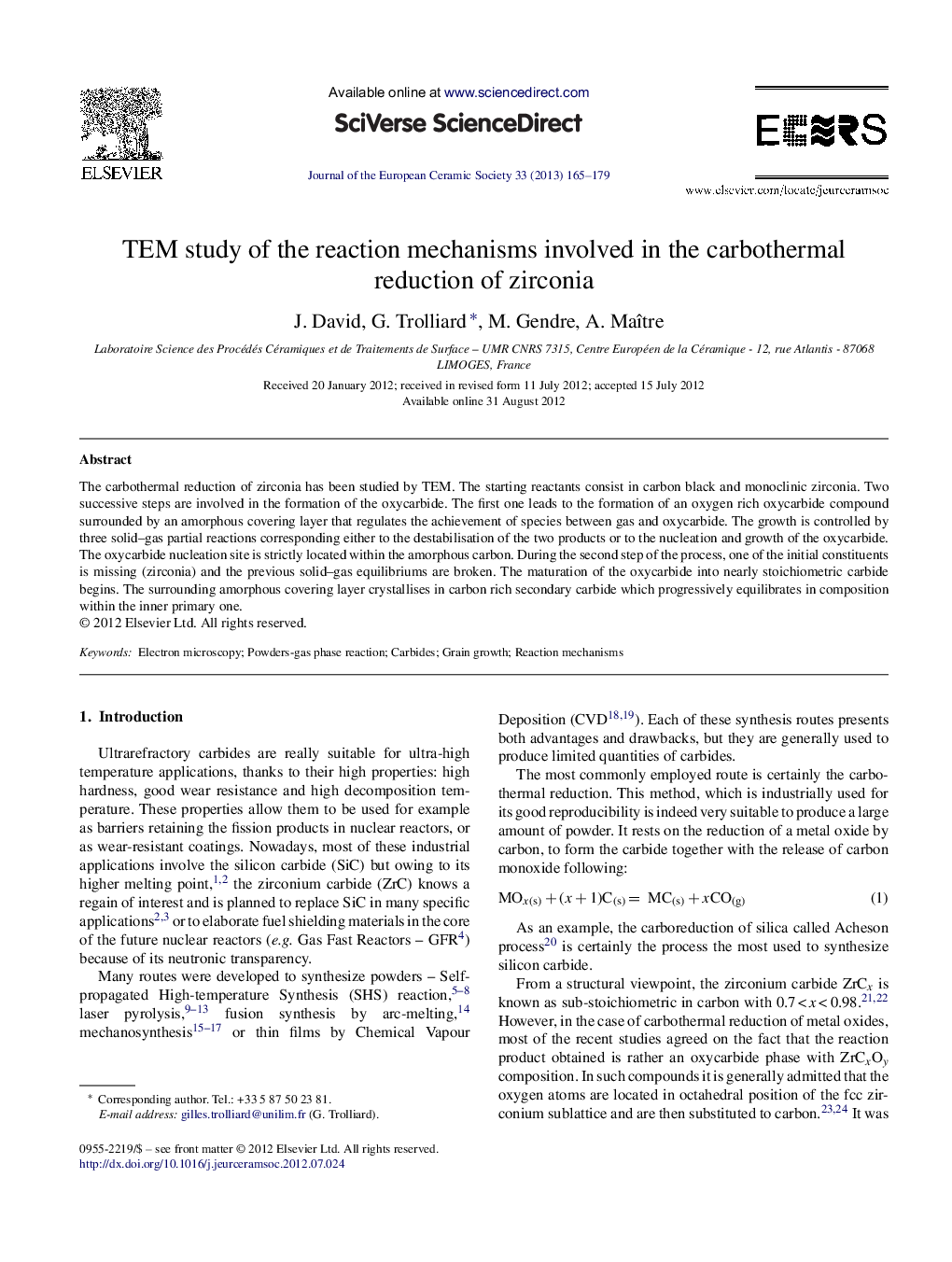| Article ID | Journal | Published Year | Pages | File Type |
|---|---|---|---|---|
| 1475958 | Journal of the European Ceramic Society | 2013 | 15 Pages |
The carbothermal reduction of zirconia has been studied by TEM. The starting reactants consist in carbon black and monoclinic zirconia. Two successive steps are involved in the formation of the oxycarbide. The first one leads to the formation of an oxygen rich oxycarbide compound surrounded by an amorphous covering layer that regulates the achievement of species between gas and oxycarbide. The growth is controlled by three solid–gas partial reactions corresponding either to the destabilisation of the two products or to the nucleation and growth of the oxycarbide. The oxycarbide nucleation site is strictly located within the amorphous carbon. During the second step of the process, one of the initial constituents is missing (zirconia) and the previous solid–gas equilibriums are broken. The maturation of the oxycarbide into nearly stoichiometric carbide begins. The surrounding amorphous covering layer crystallises in carbon rich secondary carbide which progressively equilibrates in composition within the inner primary one.
